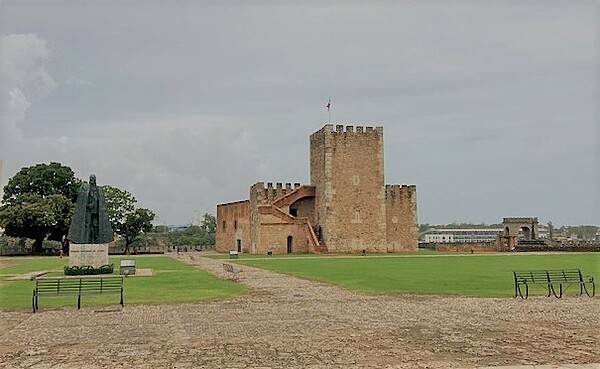Dominican Republic
Photos
9 Photos
Filter Categories
All
Filters
The Caribbean island of Hispaniola, jointly occupied by Haiti and the Dominican Republic, dominates this space station view of the earth. Haiti, with its northern and southern pincer-like peninsulas, takes up the western third of the island, while the Dominican Republic occupies the triangular eastern two-thirds. Photo courtesy of NASA.

Santo Domingo is the capital of the Dominican Republic. Founded in 1496 by Christopher Columbus, it is the oldest continuously inhabited European settlement in the Americas, with the America's first cathedral, hospital, customs house, and university. The town was laid out in a grid pattern that became the model for almost all town planners in the New World. This Terra satellite image, acquired on 18 May 2011, covers an area 24 x 30 km (15 x 18 mi). Photo courtesy of NASA.

Smoke pours from fires burning in the Dominican Republic in this Aqua satellite image, taken on 18 March 2005. Numerous fires, marked with red squares, dot the island, but the most intense are burning in the center of the island. The majority of the fires are probably agricultural fires, set to prepare land for planting. The largest fires, however, may be uncontrolled. These fires appear to be burning in the Cordillera Central, the mountains that arc across the center of the island of Hispaniola, near Pico Duarte, the highest point in the West Indies. Pico Duarte is covered with pine forests at its higher elevations and savannah grasslands at lower elevations. Because the smoke in the heights is thicker than other fires on the island, the large fires may be burning in the high pine forests. The dry season usually runs from December to May for most of the island; March is typically the driest month in the Dominican Republic. Photo courtesy of NASA.
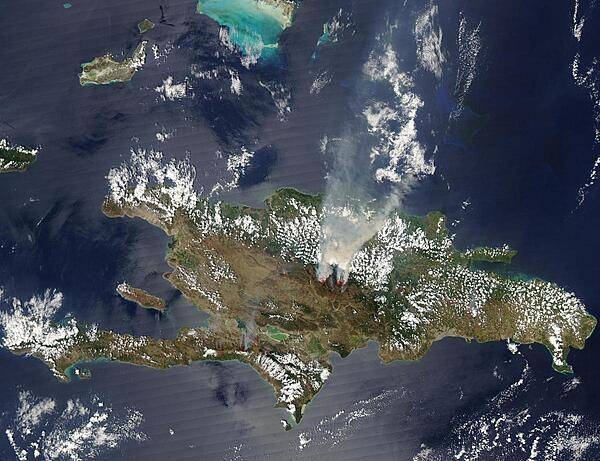
The Cathedral of Santa María la Menor is in the Colonial City of Santo Domingo. Constructed between 1514 and 1541, it was dedicated to St. Mary of the Incarnation and bears the honorary title of Primate of the Indies because it is the oldest cathedral established in the Western Hemisphere. (It was declared the first cathedral in the New World by Pope Paul III in 1546.) The cathedral's limestone façade is of a golden-tinted coral and, although not immediately obvious, its style is primarily Gothic, which becomes evident upon entering the structure.

The Pantheon National, also known as Pantheon of the Fatherland, National Mausoleum, or Pantheon of the Homeland is located in Santo Domingo, capital city of the Dominican Republic. Constructed between 1715 and 1745 by Spaniard Geronimo Quezada y Garçon, this Neoclassic-Rococo style building was originally built as the Convent of San Igancio de Loyola for the Jesuits. It was home to the Jesuits until 1767 when they were expelled from the country. After the church was closed, the building was used as a tobacco warehouse, a theater, and a government office building. In 1956, Spanish architect Javier Borroso renovated the structure to serve its new purpose as a national mausoleum. The facade of the building has a bell tower and the Dominican Coat of Arms sculpted above the door.

The interior of the Pantheon National in Santo Domingo. Constructed in the 18th century in the Baroque style, the building was originally designed as a convent for Jesuit priests, but later became a warehouse, a theater, and a government building. In 1956, it was renovated as a national mausoleum. A red carpet and national flags, a guard on sentinel duty, and the eternal flame lend reverence to the heroes interred. The light entering through the large glass window in the rear of the building illuminates the solemn interior. A copper chandelier in the center ceiling of the mausoleum reflects light from the building’s dome.
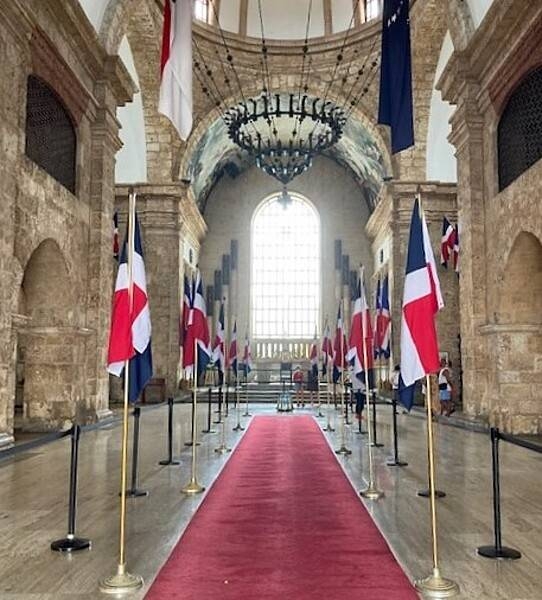
The ruin of Hospital San Nicolás de Bari, in the Colonial City of Santo Domingo, was built by order of Governor Nicolas de Ovando between 1503 and 1508. It was the first hospital and church built from stone in the Americas; it is a UNESCO World Heritage site. The hospital, a combination of Gothic and Renaissance architecture, operated from 1522 until the mid-18th century.
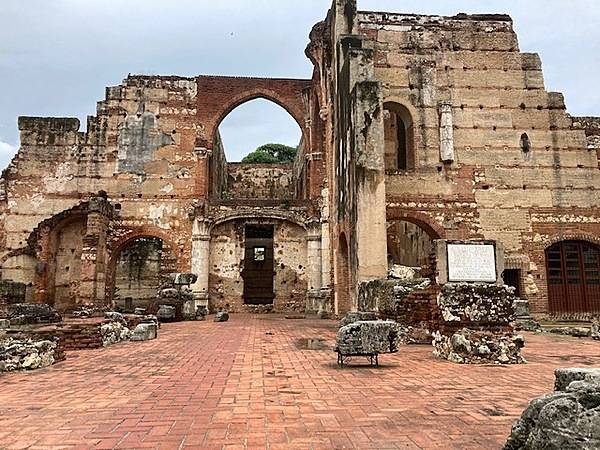
The Museo de las Casas Reales (Museum of the Royal Houses), on the right, is a part of the Colonial City of Santo Domingo, a UNESCO World Heritage Site. The building was constructed between 1505 and 1511 as the Palace of the Viceroy of Santo Domingo; in 1973, it was established as a national museum, housing collections dating back to the Spanish colonial era.
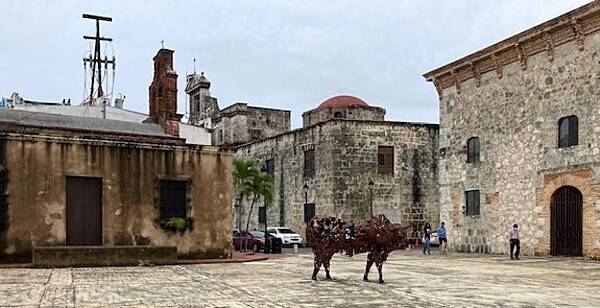
The Ozama Fortress is recognized by UNESCO as the oldest military construction of European origin in the Americas. It was built between 1502 and 1508 of coral stones, and is part of the Colonial City in Santo Domingo overlooking the Ozama River. An architectural structure of medieval style and design, the Tower of Homage stands in the center of the grounds. During the 16th century, the 18-meter high tower was the highest European-built construction of the Americas. The statue on the left depicts Gonzalo Fernández de Oviedo y Valdés, governor of the fortress from 1533 to 1557.
